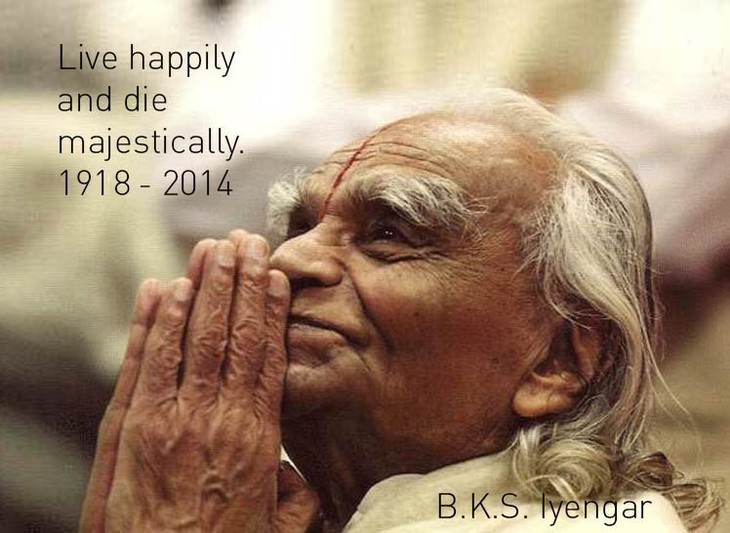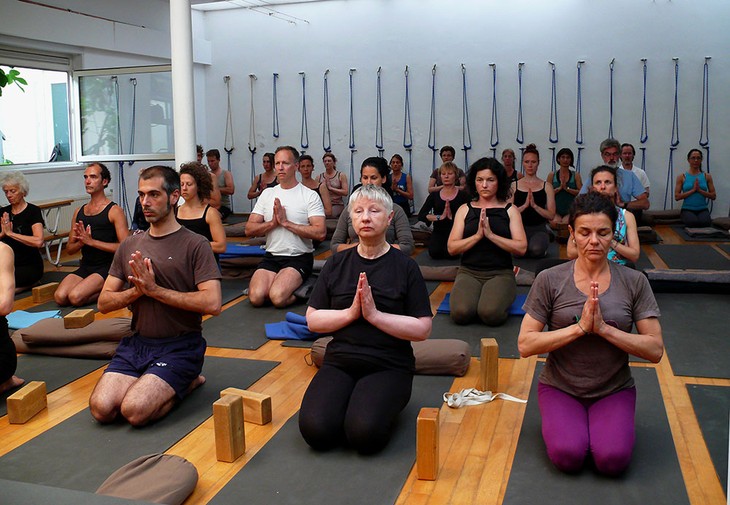(VOVWORLD) - Iyengar is the most famous and celebrated modern yogi, esteemed both in India and around the world. He is a realized master of yoga theory and practice. On the occasion of the 100th anniversary of Iyengar’s birthday, VOV interviewed Dr. G.B. Harisha, Director of the Swami Vivekananda Cultural Center, about Iyengar’s contributions to bringing Indian yoga to the world.
Hello Mr. Harisha! Welcome to VOV24/7’s Culture Rendezvous! Could you tell us something about B.K.S. Iyengar?
B.K.S. Iyengar is the one who made Indian yoga more popular in the world. He learned yoga in a very rigorous way. After mastering yoga, he felt the need to spread it across the world. On December 14, 2018, half of the world celebrated his birthday.
How did Iyengar learn yoga?
He was born in 1918, one hundred years ago, to a Hindu family in a small town in southern India. He was the 11th of 13 children. It was very difficult for his parents to pay the fees. During the global flu epidemic of 1918, his mother got very sick. He was born weak, with their arms and legs, a bulging belly, and a big head. To his misfortune, he lost his father at an early age. After his older brothers and sisters got married, he went from one province to another looking for food. Some brothers treated him well though they were not rich. Some considered him a burden. Sometimes he ate frozen foods, sometimes he didn’t get any food. The husband of one of his sisters – a man named Tirumalai Krishnamacharya, a yoga teacher – encouraged Iyengar to learn yoga for his better health and gave him a keen interest in yoga.
|
 B.K.B. Iyengar is the most famous and celebrated Indian yogi, who helped bring Indian yoga to the world B.K.B. Iyengar is the most famous and celebrated Indian yogi, who helped bring Indian yoga to the world
(Photo: shamblaha.com)
|
How is the Iyengar yoga style different from other kinds of Indian yoga?
The difference between Iyengar and other Indian yoga teachers is that their teaching is based on translations in the local language. If you ask them about science, human anatomy, the function of the brain, or the coordination of body parts, they are not able to explain. Iyengar understood all the scientific terms related to the human body. Yoga is all about related – the health of your body, your mind, and your soul.
How does Iyengar yoga relate to Indian culture and the Indian people?
Iyengar gave a modern scientific touch to traditional Indian yoga, which other yoga masters were not able to do. Indian philosophy and Indian yoga go together. Indian music and Indian yoga go together. That’s the kind of combination he promoted. In that way, he made yoga popular.
How popular is it in India?
Yoga is very popular in India for several reasons. People want to improve their physical fitness. Women want to look beautiful. Men want to look fit. We spend a lot of money to improve our health. Yoga is not the gymnasium. Yoga is not physical exercise, like running, jogging, or weightlifting. Yoga makes the human body more flexible and in harmony with the mind. It keeps the human body in good shape. That’s why Indian people are attracted to yoga. At least 50% of Indian people practice yoga regularly. In Indian culture, yoga is seen as a close harmony between mind and body.
|
 A yoga class at B.K.S. Iyengar Yoga Institute in Amsterdam (Photo: Iyengaryogainstituteamsterdam.com) A yoga class at B.K.S. Iyengar Yoga Institute in Amsterdam (Photo: Iyengaryogainstituteamsterdam.com)
|
At what age do Indian people start to practice yoga?
After the age of 12 or 13, Indian boys and girls will take up yoga. They continue to practice until they are old. There are people still practicing yoga at the age of 80 or 90. Yoga brings a kind of sweetness, softness, and smoothness to their body and their mind. That can be achieved through daily practice.
How did Iyengar bring yoga to the West and spread it around the world?
Western people, especially people from England, want a structured syllabus. They want a structured way to understand yoga because Indian yoga is very ancient and very large, including Hinduism, Jainism, and Buddhism. Many people supported Iyengar and encouraged him to go to some Western countries and open yoga classes there. Gradually people learned it, the authentic Indian yoga.
Thank you, G.B. Harisha, for sharing your story with us!